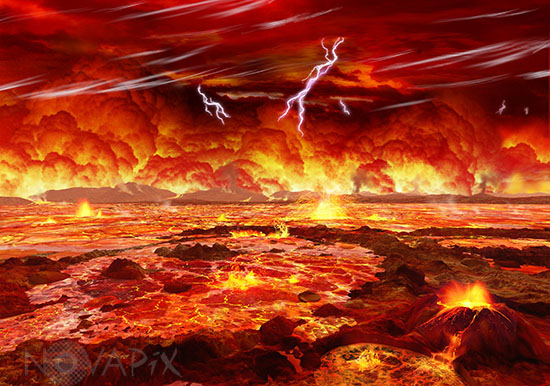The Toba volcanic super-eruption, which occurred on what is now Sumatra, Indonesia, about 75,000 years ago, possibly changed the course of our species’ trajectory. It likely caused a genetic bottleneck and perhaps the extinction of the last remnants of Homo erectus living in Asia. It’s postulated that the eruption might have caused a 10-year global volcanic winter, spurring an additional 1,000-year cooling period. It likely had a significant influence on our species in some way or another. Some researchers suggest that genetic data show that all living humans today are descended from no more than 10,000 individuals who lived approximately 70,000 years ago and survived the volcanic eruption.
Paleoenvironmental records across Southeast Asia support a distinctive shift in vegetation. Adapting to this dramatic shift in environment might have spurred sociocultural developments in Homo sapiens that gave them the leading edge when it came to succeeding over other species. Some tempting evidence comes from the rock shelter of Jwalapuram, India, where stone tools are found from layers dating both to before and after the Toba event. The recovery of these tools suggests that the hominins living there persisted in the face of adversity. However, the tool types and forms also changed after the event, shifting to smaller “microblade” technology. Would this adaptation have allowed increased mobility amid arid conditions after the eruption?
--> source credit: Suzanne Pilaar Birch, paleoanthropologist, University of Georgia
Paleoenvironmental records across Southeast Asia support a distinctive shift in vegetation. Adapting to this dramatic shift in environment might have spurred sociocultural developments in Homo sapiens that gave them the leading edge when it came to succeeding over other species. Some tempting evidence comes from the rock shelter of Jwalapuram, India, where stone tools are found from layers dating both to before and after the Toba event. The recovery of these tools suggests that the hominins living there persisted in the face of adversity. However, the tool types and forms also changed after the event, shifting to smaller “microblade” technology. Would this adaptation have allowed increased mobility amid arid conditions after the eruption?
--> source credit: Suzanne Pilaar Birch, paleoanthropologist, University of Georgia


